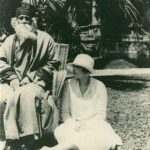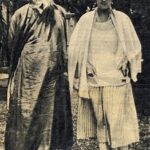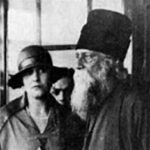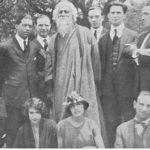In early 1924, Tagore was invited by the Peruvian government to attend the national celebrations of the centenary of the Battle of Ayacucho (fought in December 1824) as one of the country’s guests of honour. As the first Asian writer to be awarded the Nobel Prize for Literature in 1913, Tagore epitomised an anti-colonial epistemological paradigm that the authoritarian administration of President Augusto B. Leguía (1919–30) was keen to seize upon to win political support and to promote its own nationalistic agenda during the crucial historical period of the centenario. Accompanied by his English secretary Leonard Elmhirst (a young agriculture graduate from Cornwell University and a volunteer at Tagore’s Institute for Rural Reconstruction in Sriniketan), Tagore accepted the invitation and set sail from Europe on the transatlantic ship Andes, arriving in Buenos Aires on 6 November 1924. Unable to continue his journey to Peru due to poor health, he accepted Victoria Ocampo’s invitation to convalesce at a villa named ‘Miralrío’ (meaning ‘river-view’) located in the district of San Isidro (a wealthy suburb of Buenos Aires) on the banks of the River Plate that she had especially arranged for his benefit, a sojourn that in the end lasted two months, meaning that Tagore’s official trip to Peru was subsequently called off, as he was deemed too weak to cross the Andes.
During his stay in the Argentine Republic, Tagore wrote a poetry collection entitled Purabi (1925; meaning both ‘Easterner’ and the name of an evening raga in Indian classical music) which he dedicated to the symbolic ‘Vijaya’ – in Tagore’s Indianisation of Ocampo’s identity – a name that signifies ‘victory’ in Sanskrit, as well as being one of the names of the Hindu goddess Durga. Purabi comprises twenty poems, the majority of which were written in Villa Miralrío in Tagore’s native Bengali, although he simultaneously translated several poems into English at Ocampo’s request. The book was undoubtedly shaped by Tagore’s experiences in, and idiosyncratic perception of, Argentina, particularly through its exploration of issues of spatiality, hospitality, ecology, and mobility. Additionally, Tagore wrote numerous articles for the prestigious Argentine daily La Nación (published in Spanish translation), a total of 18 full-page essays mainly concerned with education and the new pedagogical methods he had previously introduced in the experimental school and university he founded in Santiniketan (West Bengal), which were published between the years 1924–25.




